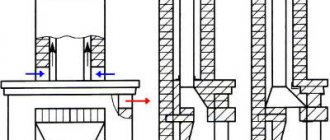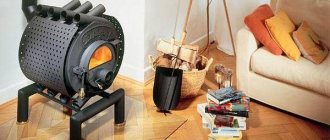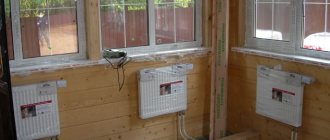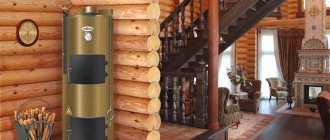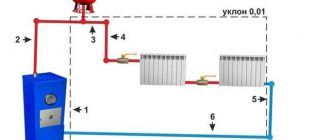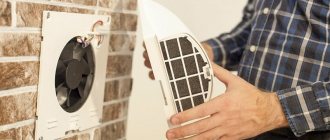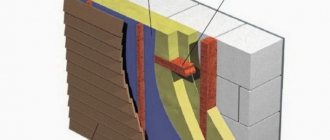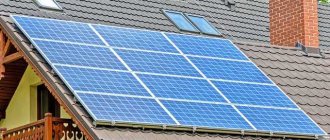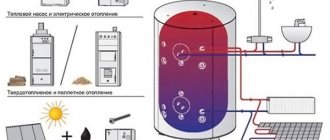In this article we will tell you everything you need to know about saving heat:
- Saving heat in a private home
- How to save heat in an apartment
- Saving heat in an apartment building
- Reducing thermal energy consumption in schools and kindergartens
- Heat saving at the enterprise
- How to save heat in the office
How to save heat in a private home
Heating methods and their efficiency
Traditionally, autonomous heating systems are used to heat private houses. The energy sources for their operation are natural gas, liquefied gas, solid fuel, liquid fuel and electricity. Systems running on natural gas are considered the most economical. But in some conditions their efficiency does not play any role. For example, if the house is not connected to the gas main, then comparisons with gas are not appropriate.
Gas heating systems
Economical heating systems for a private home are systems that run on cheap coolant. If there is a gas main nearby, feel free to connect to it and use one of the most inexpensive sources of energy. Comparing gas costs with costs for other sources, you begin to understand that this is one of the most inexpensive types of fuel.
In the absence of a gas main, liquefied gas is often used, supplied in cylinders or stored in gas tanks. But this option cannot be called the most economical, although it is very simple in its implementation - just purchase a regular gas boiler and reconfigure it to work with liquefied gas.
Solid fuel heating systems
Economical heating of a private house without gas can be built using a solid fuel boiler. To power it, coal, coke, briquetted fuel and even ordinary firewood are used. Coal burns the longest, but it is also quite expensive. But the heating system is not only economical, but also inexpensive - the simplest solid fuel boiler is quite affordable.
The cheapest heating of a private house without gas is built using solid fuel boilers, sometimes homemade ones. If you want to ensure more convenient operation of the system, you should take a closer look at a boiler with a small bunker for pellet fuel (fuel granules). Such pellet boilers operate automatically, requiring only periodic loading of new portions of pellets.
The operation of solid fuel boilers using wood is complicated by the need to load firewood too often. In addition, you need a lot of firewood, which increases the cost of operating the heating system. As soon as you miss the moment of loading the next portion of fuel, the house will begin to become cooler. The problem is solved by installing special long-burning solid fuel boilers.
It should be noted that heating systems powered by wood can be economical, even completely free - you can chop firewood in the forest yourself, which is used by people living in small settlements.
Liquid heating systems
Liquid fuel heating systems cannot be called the most economical. After gas and solid fuel they occupy an honorable third place. Used engine oil and diesel fuel are used as fuel. Because of this, in houses heated by liquid boilers, there is always a characteristic smell. There is also a need to create a special storage facility for liquid fuel, and at a distance from residential buildings - this creates additional costs.
Electric heating systems
It is difficult to create cheap heating of a private house with electricity - you need a source of free electricity. The thing is that classic electric boilers are unusually voracious. And it is almost impossible to do anything here, since their efficiency is 99% - that is, almost all the energy is converted into heat. Induction boilers can provide some efficiency, but many experts are not ready to confirm this fact.
Economical electric boilers for heating a private home exist, but they are much more expensive than their simple, small-sized counterparts. Savings are achieved through the use of weather-dependent automation and room temperature sensors. That is, they are able to automatically adapt to the characteristics of outdoor and indoor temperature conditions, adjusting the heating power - if a person were to make the adjustments, the costs would be higher.
The disadvantages of electrical systems are the need for good electrical wiring and the presence of a three-phase network to power the most powerful models of boilers.
Warm windows
Energy-saving windows with low-emissivity coating
The wrong choice of window and installation errors can lead to the fact that you will have to “go down the drain” paying heating bills. In total, approximately 35% of the cottage’s heat leaks through the windows (over ⅔ of the heat through the glass, and the rest through other structural elements). For energy-efficient houses, it is recommended to use windows with wooden frames and double-glazed windows or structures made of “warm” aluminum. PVC profiles are subject to serious deformation due to temperature changes. The wider the profile, the better it protects from the cold. As for prices, for comparison, we note that wooden windows cost from 7,100 rubles/m², plastic ones with the same characteristics - from 4,600 rubles/m², systems made of “warm” aluminum will cost 4,300–4,700 rubles/m².
The heat transfer resistance of glazing is also increased by a low-emissivity optical coating - hard (k) made of thin-layer metal oxide and soft (i) made of metal oxides. The latter are unrivaled in terms of energy saving: heat loss through the window structure is reduced by 90%. Application of a low-emissivity coating increases the cost of a double-glazed window by 20-30%.
Even if the house was built without taking into account the above recommendations, it is worth changing the windows, and monthly payments will significantly decrease
How to organize economical electric heating
Ideal home heating should be economical, efficient and safe. Each option has its own instructions for use. At the same time, in order to create an economical system, a number of rules must be followed.
Recommendations for organizing an economical heating system:
- It is necessary to reduce heat loss through walls, ceilings, stained glass windows and floors;
- An electric heating project should be made;
- You can combine different types to heat your home;
- Use an automatic temperature control system;
- Use two-tariff electricity metering.
There are many ways to insulate surfaces. This will require some costs, but they will pay off over time. This way the rooms will only have to be kept warm, which means the consumption will be less.
To save money, you should combine different heating systems. There may be a main source that will maintain the optimum temperature, which can be increased by additional equipment if necessary. And you can increase the heating efficiency using automation. You can distribute the heat consumption depending on day or night, or based on other features.
Measures to save thermal energy in schools and kindergartens
In schools and kindergartens, many of the above-described energy saving methods associated with insulating walls, attics and building envelopes can be used.
In addition, you can use the following heat conservation methods.
- Insulation of basements.
- Insulation of floors.
- Arrangement of vestibules.
- Reducing ceiling heights in classrooms.
- Removing vegetation that shades windows will allow rooms to warm up on sunny days.
Let us note that a competent energy audit and thermal imaging inspection of your building and premises can help identify the main sources of heat energy losses and eliminate them.
How to save heat in an enterprise
Electric heaters for the home: the use of convectors
Water electric heating involves large-scale installation of a boiler, piping and radiators. But you can create a simpler system using convectors. In appearance, this equipment resembles conventional radiators.
A heating element is located inside the device. So cold air enters the device from below, is heated by a heating element, rises up and goes out into the room. Convector heating has a thermostat in its design. This way you can save on heating costs.
Advantages of using convectors:
- No need to install pipeline;
- Simple installation that anyone can handle;
- No separate room for the boiler room is required;
- Compact equipment;
- There are models for rooms with high humidity;
- Easy to use;
- Operational safety;
- Wide selection of models;
- Quiet operation.
The convective system can be installed in a field or wall. At the same time, a decorative grille is installed. Air enters the house through it.
When choosing convectors, you should take into account the design of the room, its size and functionality.
The convector design may include a mechanical thermostat. But modern models are equipped with electronics. Thanks to this, you can set the optimal heating rates at a certain time. This option is considered effective for reliable insulation of the house. If there are drafts in the room, the convector will not be able to cope with them.
How to keep your home warm
8. Attach a sheet of foil behind the radiator and it will reflect heat back into the room with little heat escaping through the wall. It is worth noting that the gap between the foil and the battery must be at least 3 cm.
9. If for one reason or another you cannot attach a metal foil screen, try insulating the house from the outside. Order insulation of the end wall (as a rule, this is done with special slabs).
10. Shower with the door open (if possible). The heat and moist air created by bathing will raise the air temperature throughout the house.
11. Dry things in the house. Just like swimming with the door open, this method increases air humidity, and you will feel more pleasant and comfortable.
Solar collectors
Unlike solar panels, collectors are designed to heat water. There are two forms of solar collectors - flat and tubular. The most efficient models of these devices can process up to 85% of the energy received from sunlight - and this is a fairly high figure.
However, collectors also have a number of disadvantages. First of all, it is worth noting that solar collectors can only work during the daytime. In addition, even during the day, the efficiency of the device can vary depending on external conditions - cloudy weather significantly reduces the efficiency of the collector.
Savings when using these devices are achieved through solar energy - it is absolutely free, i.e. direct heating costs are zero. If we look at this issue from this angle, we can make the erroneous conclusion that solar collectors are the most profitable heating system possible. During a long sunny day, a collector battery with an area of 60 m2 produces up to 240 kW/h per day. Even a small collector under suitable weather conditions can significantly increase heating efficiency.
Inappropriate options
There are several types of electrical equipment designed for space heating, but not recommended for use as the main heat source:
- Heat fans. These devices have the simplest design and are a large hair dryer consisting of a heated coil and a fan that drives a flow of air through it. Their use will definitely not be cheap - the air cools down extremely quickly, and it will not be possible to maintain a comfortable temperature for a long time. Do not forget also about the load on the electrical network and the dangers - too dry air is harmful to house plants and people.
- Oil radiators are probably the most common device used by residents of apartment buildings when the central heating power is not enough. Surprisingly, this is also the least efficient heating method. And even if you manage to heat the room to a comfortable temperature, it won’t be cheap at all.
Why is this equipment so widespread if it is ineffective? The fact is that all of these are auxiliary devices designed to help out in emergency situations or when the main heating does not cope with its tasks. For a garage, for example, constant heating is not always needed. During repair work, it can be heated using a heat gun (fan heater) powered by electricity or gas. But in a house where it is necessary to constantly maintain the temperature at a certain level, infrared panels are much more effective.
Warm doors
Door design option with thermal break
If a vestibule is not provided in the house, double doors can serve as a thermal buffer. However, such designs are not always convenient and are also difficult to install. An excellent alternative to them would be a warm door or, as it is also called, a door with a thermal break. Its main difference from the usual one is several layers of thermal insulation, which are designed to keep the cold out and keep the heat out.
Some manufacturers increase the number of layers to seven or even more. Extruded polystyrene foam, stone and glass wool, and polyurethane foam are used as thermal insulation.
Its second feature is an insulating layer (usually polyamide), which separates the insulation from metal surfaces, preventing heat transfer between materials. This is what is called thermal break.
Finally, the steel frame (steel thickness at least 2 mm) is the most important structural element of a door with a thermal break.
An ordinary metal door reliably protects against uninvited guests, but not against winter frosts. The so-called warm doors, according to manufacturers, do not freeze even in the most severe cold
5
Heating the house with electricity. The most economical way for you
All explanations about savings will be considered using the example of a two-story house, which has an area of 100 m2.
- Calculation of the cubic capacity of the room. Having 100 squares, you need to multiply them by the ceiling height, for example, 2.7 meters, you get 270 m3. This building has average insulation, which means that it is necessary to add another 10 percent to the capacity. Gathering the parameters together, the following result is obtained (270/20) + 10% = 15 kW
- Purchase of equipment. Pipes, taps, fittings, radiators and other nonsense will cost about 30,000 rubles. As for the boiler, assuming that there is no 380V in the house, it is recommended to purchase two electrode boilers, each with a power of 7 kW. The cost of one is on average 15,000 rubles.
- Management of the entire system. You'll have to buy an electronic controller, completely stuffed. Planning the boiler operation schedule for a week in advance, adjusting the boiler temperature depending on the weather outside and many other necessary functions. The cost of this miracle of technology is about 10,000 rubles.
- Installation costs. Depending on the region of residence, the cost varies, but on average it is 30 percent of the cost of the entire system.
- Additional, but not mandatory, power supply. Solar panels with a power of 3 kW will cost you 80,000 rubles.
What happened in the end? The total cost without solar panels is 70,000 rubles. Power consumption is 14 kW/hour, per day of operation of two boilers at an outside temperature of -10, consumption will be about 90 kW/day. The cost of a kilowatt of light is 5.38 rubles, which means 90×5.38×30=14526 rubles per month. If we count with installed solar panels, then the amount of expenses will be 11,500 rubles.
This is one of hundreds of options for arranging your home with heating; it’s up to you to choose.
How to keep your home warm
1. In the morning, open the curtains and/or blinds to allow sunlight into the house. Glass in a window allows light to pass in, but not back out. In the house, light accumulates, bouncing off walls and furniture, and eventually turns into heat.
2. Use thick (blackout) curtains at night to prevent heat from escaping through the windows. Without sunlight, windows become your enemy. Create thick wallpaper to prevent heat from escaping.
* You can simply use a thick blanket to which a rod or stick is attached to maintain the shape.
Measure your window and find something solid, such as a stiff rod or strong stick, that you can then wrap the curtain around. You can also use an old curtain rod (if you have one).
Solid fuel boilers with heat accumulator
A standard solid fuel boiler can also be made quite economical by equipping it with a heat accumulator. The device of this design looks simple: the battery is an insulated container with pipes for connection to the heating system. The heat accumulator, as its name implies, accumulates the thermal energy generated by heating equipment.
The efficiency of the storage device largely depends on its volume - for example, a 3000-liter battery that has accumulated a sufficient amount of energy can independently heat a house of 90 m2 throughout the day. The battery tank acts as a kind of jumper between the boiler and heating devices.
We save solid and liquid fuel
For owners of solid fuel boilers, there is an option using briquetted fuel. Yes, these are compressed wastes, but they are environmentally friendly and have a very decent combustion heat. Most often, waste from the forestry industry and agriculture is processed.
If the idea seems good to you, but the price of briquettes is impressive, look for manufacturers closer to home: a significant share of the cost is transportation costs. If there is a production facility closer, the price will be significantly lower.
Fuel briquettes or eurowood - perhaps this is your way to save on fuel
And another option, but this is for those who have combustible waste in stock or at a bargain price: making fuel briquettes with your own hands. Presses can be very different. For household use, you can generally make it from several boards.
If all these “dancing with tambourines” are not for you, take a closer look at pyrolysis boilers and long-burning boilers. The equipment is not cheap, but really economical.
To save liquid fuel, it is important to choose a productive burner and organize filtration and heating of diesel fuel. In this case, the fuel will burn completely, which will provide more heat with minimal consumption.
Options for electric heating of a private house
Such a heating scheme involves the use of various types of equipment.
Boiler application
It is not uncommon to install an electric boiler for heating a 220V home. This device is a budget option and is easy to install.
Electric boilers are of the following types:
The diagram shows the principle of working with heating elements
Electrode model device
Installation of induction device
Selecting IR panels
When determining how to heat a house economically with electricity, you can consider the option of installing infrared structures. Such products do not warm up the air inside the rooms, but various objects. If in the version with a boiler the air masses move upward and then cool, then in this case the hot flows are directed to the floor.
Infrared designs do not take up much space
If you add thermostats to IR devices, they will work more efficiently. One controller is enough to control three heaters. This equipment is economical to use, but expensive in terms of installation and construction costs. IR devices consume a small amount of electricity. In addition, they efficiently distribute heat. They can perform spot and zone heating. Even after the structure is turned off, objects emit heat for a long time.
Infrared panel device
You can install such equipment yourself. The infrared system is used both as the main type of fuel and as an additional one. The advantages of this option include a long service life, up to 80 years.
Heating a house with electricity is also done using infrared heated floors. This is an economical and effective remedy. This design is not afraid of unexpected power surges and does not break due to minor damage. Such a device can be installed under various floor coverings except parquet. Infrared rays only heat solid objects, so when the floor is heated, the elements themselves do not heat up.
Installation of infrared floor covering
Infrared panels for ceilings
Advantages of convectors
When choosing the most economical electric heating without a boiler, it is worth exploring the capabilities of convectors. According to manufacturers, a convector powered by electricity heats the space efficiently and at the same time consumes a small amount of electricity. The main advantage of the device is that its installation is simple.
Convector device
It takes about two minutes to warm up the heating element, which is much faster than when heating with water devices. The advantages of such structures include:
- low cost of equipment;
- fire safety;
- The heating system can not be completed immediately, purchasing additional radiators as needed;
- modern design;
- uninterrupted operation even with sudden voltage changes;
- small sizes.
This method maintains the desired humidity ratio in the room and does not destroy oxygen. Excellent technical properties and excellent power indicators make it possible to use electric convectors for heating both large and small private houses.
Such designs are compact in size and mobile.
The main element of the design is the heating element, which converts electrical energy into thermal energy. The operating principle is air convection. In this case, the cooled flows penetrate the slots in the lower part of the housing and then exit through the upper openings. The convector can operate separately or in a system controlled by a temperature controller.
Wall-mounted models are characterized by functionality and allow you to free up space
Insulation
Economical heating systems will never work effectively if there are cracks and holes in the window openings or walls, and the enclosing structures do not have sufficient thermal insulation. With rational home insulation, energy savings are quite significant, regardless of the boiler model and type of fuel used. In this case, the equipment will be able to work less intensively, resulting in reduced fuel consumption.
A house can be insulated not only at the construction stage. The option of installing additional thermal insulation during operation is quite viable. Heat losses during the cold season must be minimized. When building a private house, you should consider that when constructing the box, the enclosing structures have a thickness appropriate to the climate of the region. And it directly depends on the type of material used. Additionally, the walls, as well as the ceilings of the upper and lower floors must be thermally insulated.
Modern technologies make it possible to reduce the thickness of insulating layers. But when insulating structures, you should not get carried away with too thin materials. After all, if they are damaged, the cold will certainly penetrate into the “weak” areas, and heat loss will become inevitable.
Expanded polystyrene has proven itself positively as a heat insulator. Recently, it is often used to insulate already built houses. Today, expanded polystyrene, characterized by a low thermal conductivity, is one of the recognized leaders in terms of price and quality. It is precisely this that experts recommend using for suburban residential buildings.
Regarding windows and doors, the following can be said. All gaps between boxes and openings must be carefully sealed so that cold air cannot seep into the house in winter.
Properly performed insulation will reduce the consumption of thermal energy by almost 2 times, which will significantly save the material resources of the home owner. You will have to pay less for electricity or gas, and you will need to store coal and firewood for the winter in reduced quantities. In addition, it will be possible to purchase a less powerful boiler.
Sealed thermal insulation circuit
Significant heat loss from a building occurs through the foundation, walls and roof. The statistics are not at all cheerful: about 15% of the cottage’s thermal energy is lost through the foundation and floor, about 20% through the walls, and about 15% through the roof. Therefore, the main preventive measure against heat leaks is the creation of a sealed shell that does not have cold bridges.
Even at the stage of digging a pit, it is necessary to form a continuous heat-insulating circuit that excludes contact of the foundation with the ground.
There are two ways to achieve high heat-saving ability of walls. The first is to build structures from traditional “cold” materials (reinforced concrete, foam concrete, brick, etc.), increasing their thickness. However, this option is not economically viable, since you will have to overpay for materials for both the walls and the foundation. In addition, labor costs will increase.
A more reasonable way is to build enclosing structures of optimal thickness from materials that have a low thermal conductivity coefficient. These are either single-layer walls made of large-format porous ceramic bricks or aerated concrete blocks, or multi-layer walls with effective thermal insulation (layered masonry, external insulation with a plaster layer and a ventilated facade).
The advantages of single-layer structures are the acceleration of construction processes, as well as the ability to abandon thermal insulation. The advantage of multilayer ones is the insulation installed on the street side - it covers possible cold bridges, and in addition protects the walls from external influences and temperature fluctuations.
Frame wall design with cross insulation and various cladding
6
Energy saving technologies and alternative heating systems
Layout of elements
Maximum savings in energy sources when heating a country house can only be achieved if it is possible to maintain low temperature conditions in the heating system for a long time. Energy-saving technologies make it possible to achieve high efficiency levels with low fuel consumption.
Warm floors are considered the best option for heating residential premises in a country house. Thanks to their design, such systems quickly, evenly and efficiently heat rooms at relatively low coolant temperatures. Distributing pipes or cables over the entire floor area prevents heat loss and promotes optimal heat distribution over height. In this case, at the level of the feet the temperature is higher than at the level of the head.
No radiator model can provide uniform heating of the room - it will always be warmer near the radiator than at a distance from it.
Visual view
In private homes, from an economical point of view, the following have proven to be excellent:
- infrared systems that do not require laying pipes or installing boilers;
- skirting systems located around the entire perimeter of the floor;
- air systems that pump heated masses into the room and suck cooled ones back into the unit.
For private homes, solar or geothermal heating can be considered as alternative heat sources. Such systems are completely autonomous, but expensive. After a few years, they, of course, pay for themselves and begin to make a profit in the form of savings on utility bills.
How to request a recalculation
In case of constant interruptions in heat in apartments or on the landing, residents have the right to demand a recalculation. The cost of services should be reduced: - by 0.15 percent for each hour of exceeding the permissible duration of a heating break. Emergency heating shutdowns during the cold season should not exceed 24 hours per month. The permissible one-time break at a temperature in the apartment from 12 to 18 degrees should not exceed 16 hours; at a temperature of 10–12 degrees, an emergency shutdown should not exceed eight hours, and if the temperature in the apartment is 8–12 degrees, then a one-time shutdown should not exceed four hours;
- by 0.15 percent for each hour the air temperature deviates from the norm. Deviations of the standard temperature by no more than three degrees are allowed only from 00:00 to 05:00.
In addition, residents may request a review of the legality of increased utility bills. An online calculator will help you calculate your utility costs yourself.
When the numbers do not agree with the receipt data, you should contact the Moscow Housing Inspectorate. If inspectors reveal violations, the management company will be required to recalculate and return to residents the difference between the payment received and the actual cost of heat consumed. For example, residents of a house on Andropov Avenue were refunded more than two million rubles in overpayments for heating, and in Fili-Davydkovo residents were recalculated for more than 400 thousand rubles. One of the largest overpayments - 15 million rubles - was returned to residents of a house in Northern Chertanovo last year. There, the management organization collected money bypassing the readings of public meters for two years.
When else Muscovites have the right to demand a recalculation and how to do it, you can find out in the mos.ru instructions.
Infrared electric heating at home
Infrared heaters are a fairly popular heating option. Such heaters heat objects, not air. At the same time, the floor does not remain deprived, as with other systems.
The sequence of arranging infrared heating:
- It is necessary to remove the heater from the packaging and carefully study the instructions.
- Then the heater is fixed or installed in the desired location. Safety precautions must be strictly followed. Film options are easily secured due to the sticky side.
- The heater is connected to the electrical network.
An excellent solution is to install infrared electric heating on the ceiling.
The installation is so simple. This does not require any calculation. Moreover, this technique is absolutely safe for health, even useful.
Alternative heat sources
Progress does not stand still and every year more and more different economical heating systems and not very economical ones appear. They can replace the usual traditional types of home heating, and also save money.
This system is interesting because it heats not the air, but the walls, furniture, that is, surfaces. This is economical heating, and such a system will save up to 30% of electricity. The warm baseboard system operates by heating water using heating elements. For example, a 12-meter plinth will require only four liters of water.
Baseboard heating
Modern, economical heating systems used to heat private homes
Infrared heating systems
The method is very convenient, but labor-intensive, there is no need to lay pipes and install boilers, the savings are about 60%, if we take into account the usual payment for heating
Infrared ceiling heaters
- Air systems. If some kind of heating is more economical, then, in principle, air systems can be cited as an example. This is quite economical; gas air heaters and pipes are used, through which heat enters the house. They have many advantages. To prevent dust from rising along with the heated air, there are filters that purify the air. Electricity-saving heating system. Converts electricity into heat, but does not consume much electricity.
- Infrared film for heating. New product from foreign manufacturers. Used as a floor covering, this is a fairly economical DIY heating solution. But you need to take into account that nothing can be laid or placed on this film, not even carpets.
Warm floor made from infrared film
Solar panels. For those who live in sunny parts of our country, and indeed the world, this is simply an ideal option. It will save a lot of money, you won’t have to pay for hot water every month, you will have it all year round. You won't worry about turning off the heating or hot water. And you will always have electricity. Now it has become popular to install solar panels on the roofs of houses; they can also serve as an additional source of power supply, if the power suddenly goes out, they will help maintain the operation of heating devices, boilers, you can watch TV, use various household appliances, charge your phone and much more. You will be practically independent of both hot water and heating suppliers and energy providers, which will significantly save you money, nerves and time, and make your life easier.
Heating system using solar panels
We save heat at the enterprise
You can save heat in enterprises in the following ways.
- The use of heat-saving polyvinyl chloride film, which is mounted in the interframe space of the windows. These are so-called energy efficient windows.
- The use of canvas curtains at the entrances to production premises and workshops.
- Glazing of industrial premises.
- Enterprise heating inspection
- Calculation of thermal loads
In addition, it is necessary to take the measures described above, that is, glazing the premises, insulating the walls, eliminating cracks in the windows, etc.
Save heat in the office
Why electricity
Electric heating differs from classic water-stove and gas systems by being more economical and practical. We will leave the first aspect for discussion below, and describe the operational advantages here:
Electric heating is not only silent, but also environmentally friendly. It is transported safer than gas and does not emit harmful substances at all, both into the atmosphere and indoors. In the absence of waste, the need for exhaust chimneys and traction structures disappears. Heating using coal or wood is not at all comparable to electric systems. Heating with electricity does not require large one-time costs. You can make a comparison using gas as an example: to connect a house you must purchase equipment for each room, install communications, a boiler, and connect it to a common pipeline. Moreover, all this must be done together, since it is impossible to postpone connecting any part of the house to the system. And the electrical method allows you to organize sequential installation: first, the most important parts of the house are connected, and then, as funds accumulate, peripheral parts are connected. Thanks to the possibility of using a multi-tariff meter in a private house or apartment, as well as the constant development of technology in this area, electric heating is already the most economical among analogues
You should not focus on the high price of the equipment - it quickly pays for itself due to low energy consumption. Almost every method of organizing electric heating allows you to install it yourself, without many additional tools.
Of course, the use of electrical systems for heating cannot be called ideal. The work of high-quality heating of each home requires taking into account many features. In some regions, the cost of electricity can be so high that gas cannot be avoided. In old apartment buildings, it is difficult to switch to electric heating for two reasons: it is very difficult to disconnect from the central highway, and the electrical network will have to be reconnected, taking into account powerful equipment.
Despite this, the overall picture tips the scales towards electricity. For premises where there is no gas or where there is no possibility of supplying it, it is a real salvation.
Individual counter: pros and cons
The first thing you want to do in order not to pay for excess heat is to install individual meters on the radiator. In some new buildings, batteries are already equipped with such equipment. By adjusting the temperature, residents can reduce their heating bills.
But this method is not suitable for everyone. Firstly, you can switch to heating using individual metering devices only at the same time for the whole house. This decision is made at a general meeting of owners. If you installed meters without the consent of your neighbors, you will still not be able to transfer the readings to the management company. And this decision is fair: even with the radiator turned off, the apartment will remain warm thanks to the heating risers, for which the whole house will be forced to pay.
Secondly, it is beneficial for each owner to install meters only with a modern horizontal heating system, when heating risers are located in the entrance, and two pipes are led to the apartments - direct and return. With vertical wiring, several heating risers are installed in the apartment at once. In this case, meters will have to be installed on each pipe, which will negate all savings.
How to reduce heating costs and increase efficiency
Want to know how to make cheap heating? To do this, it is not enough just to buy an economical electric heater and install it in the house; you need to properly insulate the building. Significant heat loss from the room through the building envelope can cause you to be disappointed in its performance after purchasing the most efficient and economical electric heater.
Any gaps, cracks or holes in the flow or around windows and doors will help the room cool down quickly. Also, the reason for this may lie in leaky windows or in the absence of insulation in the wall structure. With high-quality insulation of the house, the heating efficiency indicator reaches 80%.
Be sure to install automatic heating control systems. So, if there is no one in the house during the day, it is better to configure the equipment so that it automatically turns on for heating a couple of hours before your arrival. As a result, you will walk into a warm home, but at the same time save on heating costs.
It is equally important to correctly calculate the power of heating equipment and select suitable locations for their installation. Be sure to install a two-tariff meter and configure the devices so that they operate at full capacity at night, when electricity is cheapest
